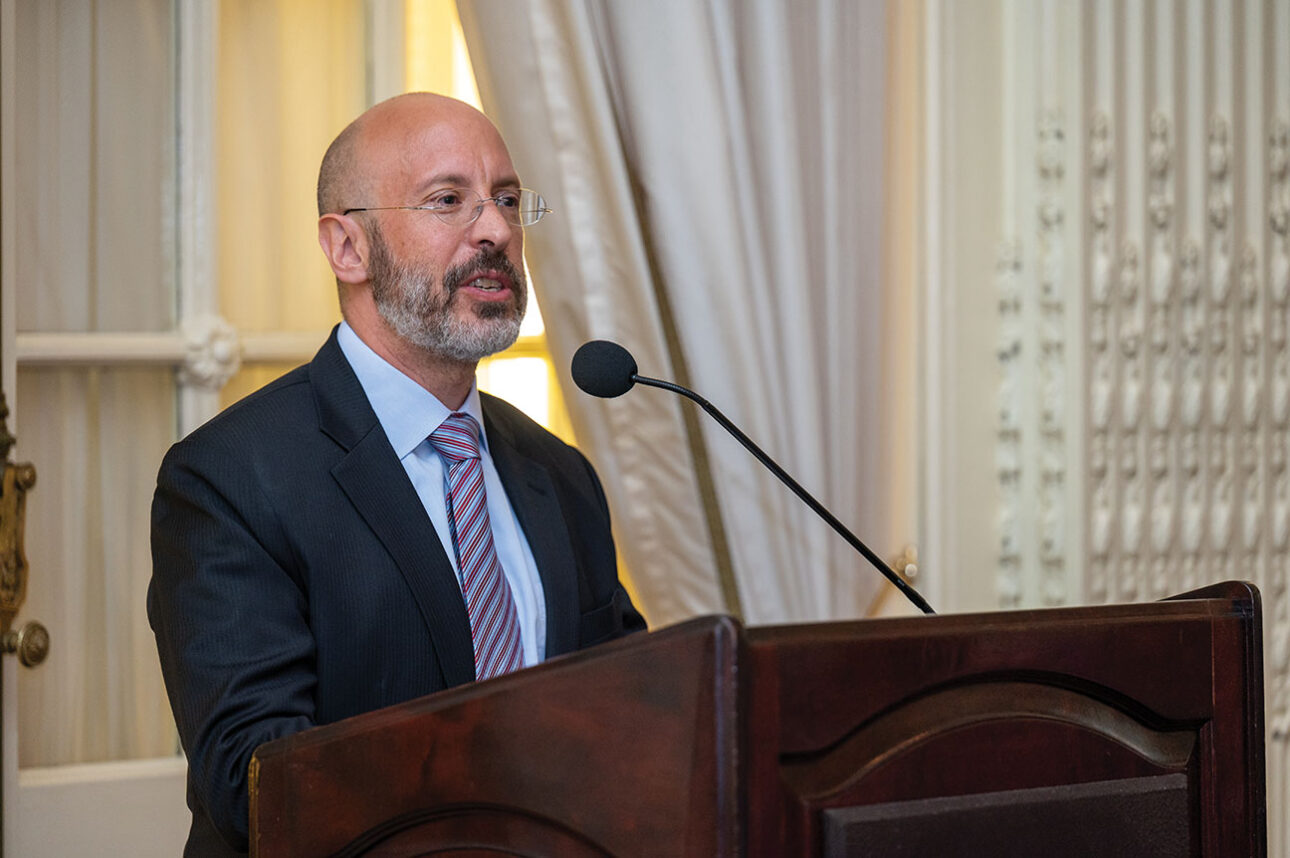 Vizerskaya/Getty Images
Vizerskaya/Getty Images Each year before Sukkot, photos of Orthodox Jews shopping for Lulavim and Etrogim circulate in the media and online; almost inevitably, it includes one of buyers scrutinizing Etrogim very carefully before making a purchase. Last year, a comic post circulated on social media. On one side was the picture of a couple standing under the Chuppah at a Hassidic wedding; on the other was a man looking carefully at an etrog through a magnifying glass. The caption underneath was: “Married random girl. But spends hours vetting a piece of fruit.”
This joke, although unfair, speaks volumes. Haredi families do an in-depth evaluation before matching a couple together. The difference is that physical attraction is not the basis of the match, nor is it the highest priority; they don’t look over the physical attributes of a potential spouse with a magnifying glass. These marriages begin with the assumption that “charm is deceitful and beauty is empty,” and that a true relationship is the meeting of two souls. Values and virtues are the primary yardsticks for choosing a mate, and that is the foundation of the Jewish ethic of marriage.
At the same time, this is not meant to dismiss the value of beauty; even so, Judaism has a complicated relationship with the aesthetic. In a lecture on Robert Frost’s poem Stopping by Woods on a Snowy Evening, Rabbi Aharon Lichtenstein describes inner religious conflict. Lichtenstein, who prior to becoming the Rosh Yeshiva of Yeshivat Har Etzion had earned a PhD in English Literature, explains that “I know of few poems that express so forcefully the moral idea that binds us to the beit midrash (study hall).” He explains that there is always a tug-of-war between the aesthetic and the ethical; beauty is deeply worthy of admiration, but there are greater responsibilities – promises – that one must fulfill. One must not be distracted from the greater goal of life.
The final words of the poem are:
The woods are lovely dark and deep.
But I have promises to keep,
And miles to go before I sleep,
And miles to go before I sleep.
Rabbi Lichtenstein explains:
Coupled with this moral obligation is a tangible sense of fatigue…The narrator longs to resign himself, to surrender to nature. He wants to remain there, perhaps for an hour or a day, perhaps until the snow melts, perhaps forever. “The day is short and there is much work to be done” (Avot 2:15), or in Latin, “Ars longa, vita brevis.” Creativity is endless, and life is short. Nevertheless, the narrator longs to remain in the snow, by the woods. But he has promises to keep, and miles to go before he sleeps – and this sleep is, of course, death.
Based on another phrase of Frost’s, Rabbi Lichtenstein calls this a “lover’s quarrel with the world.” Life places humankind between the aesthetic and the ethical. The aesthetic appeal of this world is extraordinary; but Judaism demands that we not lose sight of our mission, because there is much that needs to be accomplished before our final slumber.
But that leads one to the obvious question: why then does beauty play such a large role in evaluating the Lulav and Etrog? The Torah describes the Etrog as “a beautiful fruit”; this is expanded by the Talmud as becoming a general qualification, that all four species, (Lulav, Etrog, Hadasim, Aravot) must reach a certain standard of beauty. This emphasis is curious, considering that the beauty of the four species is a superficial characteristic.
What makes this even more puzzling is that a beautiful fruit is the source of the very first sin in the Bible; in the Garden of Eden, Adam and Eve are tempted by a forbidden fruit that is “a delight to the eyes.” The Ramban notes this parallel and explains, based on mystical thought, that the very purpose of the Etrog is to fix the sin of Adam and Eve. His understanding is that combining the beauty of the Etrog with the Lulav, which represents uprightness and righteousness, allows the aesthetic to become spiritual and meaningful. While beauty should not sit at the center, it also can serve a role in our lives, so long as we don’t lose sight of our priorities.
But there is another way of resolving this question. Beauty can inspire awe, even if not everything beautiful is worthy of awe. The Talmud’s emphasis on subjugating the Etrog to halakhic parameters is meant to effect a transformation; the Etrog’s function is for divine service, rather than a mere display of beauty.
And in this small twist of redefinition, we learn to look for a very different type of beauty. The awe we experience at seeing the perfect Etrog is very different than that of an exceptional work of art; in it, we see our spiritual aspirations. The Etrog is now an object of moral beauty rather than aesthetic beauty.
Appreciating moral beauty is the very purpose of every mitzvah, including the mitzvah of the beautiful fruit. A powerful short story recounted by the Nobel Laureate Shmuel Yosef Agnon emphasizes this point.
Agnon tells of how one year, he went to buy an Etrog at the very same time as the renowned Rabbi of Teplik, who lived humbly and gave a great deal of charity. The Rabbi bought the one he could best afford and took it home. The following day, when Agnon goes to the synagogue, the same Rabbi turns to him and asks to borrow his Etrog.
Agnon then writes:
“I asked him, “Rabbi, where is your etrog? You bought a lovely etrog…”
….He (the Rabbi of Teplik) sat and said, “In my neighborhood there resides a certain householder. A tough, angry, irritable man, but careful about mitzvot. He bought an etrog for a half lira, maybe more. He bragged about it in front of his neighbors, that there was none finer. I’m not sure how beautiful it really was, but there’s no one in this neighborhood who can afford to buy an etrog for a half lira.
This morning I heard a sound of crying coming from his house. I told my wife, I hear a child crying, go see why she is crying. My wife said, The girl was playing with the etrog her step-father bought for a half lira, the etrog fell from her hand and broke its pitam, becoming invalid for the mitzvah; her mother smacked her.
My wife added: That poor wretch knows what’s in store for her from her husband on account of her daughter from her first marriage. … I took my etrog to the girl and said to her, Don’t cry. Here is my etrog, give it to your mother. If your father asks, have your mother tell him: The rabbi was here and saw that your etrog was not kosher. To enable you to perform the mitzvah properly, he gave you his etrog as an unconditional gift.” (The Etrog, translated by Jeffrey Saks.)
Agnon recognizes that some foolish people, like this irascible stepfather, can misunderstand the mitzvah of Etrog as beauty that can be seen with one’s eyes. But the Rabbi of Teplik knows better; and nothing can be more beautiful than his wonderful act of self-sacrifice.
True beauty can only be seen by the soul.
Rabbi Chaim Steinmetz is the Senior Rabbi of Congregation Kehilath Jeshurun in New York.























 More news and opinions than at a Shabbat dinner, right in your inbox.
More news and opinions than at a Shabbat dinner, right in your inbox.